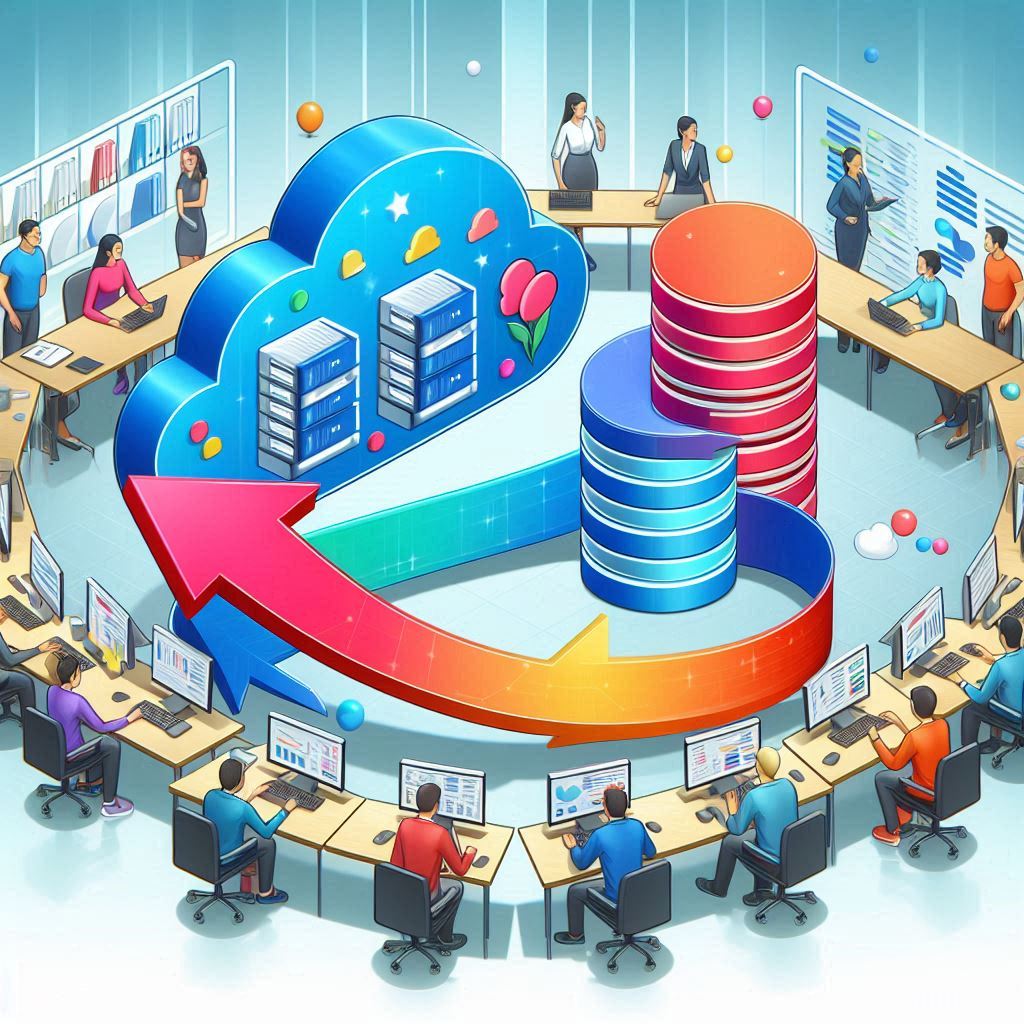Oracle Database Migration: How to Move Data Without Downtime?

In today's world, where data is a crucial asset for every company, database migration is becoming an indispensable element of IT strategy. Whether it’s about moving data to the cloud, updating infrastructure, or consolidating systems, the migration must be carried out efficiently and safely.
Why Do We Migrate Data?
Data migration, especially to the cloud, brings a number of benefits:
- Scalability and Flexibility: The cloud allows for easy adjustment of resources to current business needs.
- Cost Reduction: Cloud migration can lower IT infrastructure maintenance costs.
- Increased Security: Cloud providers offer advanced data protection mechanisms.
- Access to Modern Technologies: The cloud enables the use of the latest solutions, such as artificial intelligence or machine learning.
Migration Scenarios:
Database migration can proceed in various ways, depending on business requirements:
- Migration with Downtime:
- This scenario is acceptable when the application is not critical for business continuity.
- Downtime allows for migration in a controlled environment, minimizing the risk of errors.
- Migration Without Downtime:
- This scenario is necessary when the application must operate 24/7.
- It requires the use of advanced data replication and synchronization techniques.
Oracle Database Migration Tools:
Here's an overview of tools that can be used for Oracle database migration, along with their characteristics and use cases:
- Oracle Data Pump:
- Used for logical migration of data and metadata.
- Cost: Included in the Oracle Database license.
- Use cases:
- Migrations with downtime, when a break in application operation is acceptable.
- Database updates, moving data between different Oracle Database versions.
- Moving data between different platforms.
- Oracle Recovery Manager (RMAN):
- Used for physical backup and recovery of databases.
- Cost: Included in the Oracle Database license.
- Use cases:
- Migrations with downtime, when the entire database needs to be moved.
- Recovery after failure, creating backups for data protection.
- Database cloning.
- Oracle GoldenGate:
- Enables real-time data replication.
- Cost: Requires an additional license.
- Use cases:
- Migrations without downtime, when the application must operate 24/7.
- Data integration, data synchronization between different systems.
- Creating high-availability systems.
- Oracle Cloud Infrastructure Database Migration Service (OCI DMS):
- Simplifies and automates migration to the OCI cloud.
- Cost: OCI service, costs depend on usage.
- Use cases:
- Migrations to OCI, both with and without downtime, depending on the chosen method.
- Migrations from local data centers or other clouds to OCI.
- Simplifying the migration process.
- Oracle Zero Downtime Migration (ZDM):
- Minimizes downtime during migration to OCI or Exadata Cloud@Customer.
- Cost: Requires a license, costs depend on usage.
- Use cases:
- Migrations of critical databases without downtime, when minimizing downtime is crucial.
- Migrations of large databases, when the risk of downtime is high.
- Migrations to Exadata Cloud@Customer.
- Oracle Data Guard:
- Maintains data synchronization between databases.
- Cost: Included in the Oracle Database Enterprise Edition license.
- Use cases:
- Migrations with minimal downtime, by switching to a standby database.
- Ensuring high availability and data protection.
- Creating disaster recovery systems.
Differences Between OCI DMS and ZDM:
- OCI DMS is a cloud service, while ZDM is an installation tool.
- OCI DMS is specific to OCI, while ZDM is more versatile.
- ZDM places greater emphasis on minimizing downtime.
Summary:
Choosing the right tool and migration scenario depends on the specifics of the application and business requirements. It is crucial to carefully plan the migration process to ensure its smooth and safe execution.
![[photo]](/media/images/profile_pic/fot2.jpg)
Aleksander Legkoszkur
Database Administrator
A technology fan who likes to stayes at night until he finds a solution. A small handyman who tries to fix everything he can get his hands on. Worked with technologies like:
Windows Server / Linux
Oracle Cloud
Python / T-SQL / PL-SQL / HTML / CSS
Oracle / SQL Server